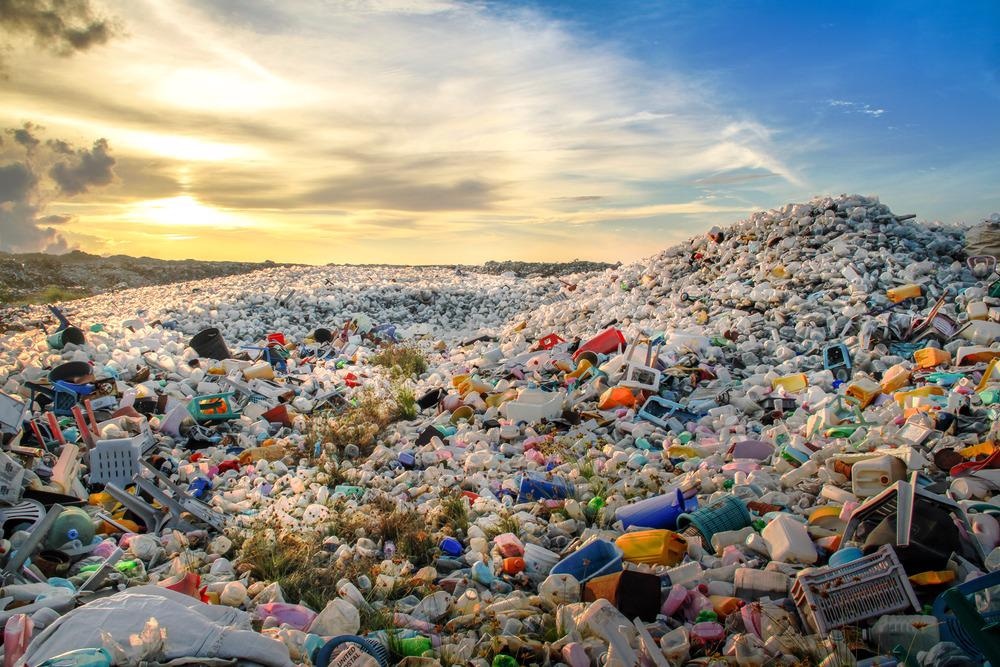
Image Credit: MOHAMED ABDULRAHEEM/Shutterstock.com
The worldwide accumulation of plastic waste in oceans, lakes, landfills, and rivers is the foremost concern of environmentalists. One of the main factors associated with plastic pollution is the lack of proper collection and recycling processes. The conversion of plastic waste into higher-value products, namely, hydrogen and carbon nanotubes, is a novel approach to managing plastic waste.
Carbon nanotubes are nano-sized carbonaceous cylindrical hollow tubes with diameters ranging from 0.1–100 nm and a length of around 100 µm. These nanotubes are physically and chemically stable and possess high electrical conductivity and tensile strength. Owing to their unique properties, they are used in wide-ranging applications, e.g., conductive paints and coatings, transistors for microelectronics, energy storage, biosensors, and medical devices.
Similarly, hydrogen also has multiple uses. In 1950, hydrogen was used as rocket fuel by the National Aeronautics and Space Administration (NASA). They also happened to be the first to use hydrogen fuel cells to generate electricity for spacecraft. Hydrogen is also used as a fuel in vehicles. Mostly, hydrogen fuel vehicles are used in automobiles and transit buses.
In the recent past, plastic waste conversion into usable hydrogen is carried out in commercial facilities. However, the method involves the use of extreme temperature to decompose plastic into syngas. It is also a multiple-step process that requires the separation of hydrogen from syngas.
Conversion of Plastic Waste into Hydrogen and Carbon Nanotubes Using Catalytic Pyrolysis
In the catalytic pyrolysis method, bimetallic nickel-iron catalyst at the reaction temperature of 800 °C is used to convert plastic waste into hydrogen and high-quality carbon nanotubes. This chemical reaction requires a two-stage fixed bed reactor. In the reactor, the waste plastics are firstly pyrolyzed and then subjected to various chemical reactions.
There are a few factors on which carbon nanotubes' yield and quality, derived from plastics waste, depend on. These are as follows:
- Design of the reactor used for production
- Type of catalyst
- Operational parameters
Conversion of Plastic Waste into Hydrogen and Carbon Nanotubes Using Microwave Treatment
More recently, scientists from renowned universities of the United Kingdom, the Kingdom of Saudi Arabia, and China have collaborated to develop a novel catalytic method for converting plastic waste to clean fuel and high-value solid carbon.
Their method involves pulverizing the plastic, i.e., blending the plastics into tiny bits and adding iron oxide and aluminum oxide catalysts. This mixture is subjected to microwave treatment, where the catalysts are heated and not the plastics.
The catalysts create hot spots in the plastic and effectively strip out 97% of the plastic’s hydrogen and high-quality carbon nanotubes. This novel process is highly improved than previously available techniques. This is because this technique is a less energy-consuming, low-cost, one-step process with rapid production, i.e., 30 to 90 seconds.
While explaining the mechanism behind the catalysts' activity, the researchers observed that when a metal enters a mesoscopic regime traversing Size-Induced Metal to Insulator Transition (SIMIT), it decreases the conductivity within the particle by 10 orders-of-magnitude. Subsequently, an increase in microwave absorption takes place by the same order-of-magnitude. Therefore, the small metallic particles below the SIMIT act as “super microwave absorbers”, offering an efficient route for heating the catalyst particle and producing tiny hotspots on exposure to microwave electromagnetic radiation.
Scientists believe that this method will drastically reduce plastic pollution problems and produce clean fuel and value-added carbon products.
Properties of Plastic Derived Carbon Nanotubes
Generally, carbon nanotubes' characterization is carried out using various analytical techniques such as transmission electron microscopy (TEM), scanning electron microscopy (SEM), and Raman spectral analysis. Both SEM and TEM image of the carbon nanotubes derived from catalytic pyrolysis of waste plastic (low-density polyethylene) using nickel-alumina catalyst revealed its multi-walled and filamentous structure. Their size varied, i.e., diameters between 15-30 nm and lengths of up to several hundred microns.
Raman spectrometry determines the crystal defects, purity, and tube alignment of the carbon nanotubes. Therefore, it helps determine the quality of the carbon nanotube. Raman spectral analysis of the carbon nanotubes produced from the low-density polyethylene using catalytic pyrolysis method in the presence of nickel-alumina catalyst indicated less pure or low-quality product.
Application of Carbon Nanotubes Produced from Waste Plastics
Researchers have reported a limited number of applications of carbon nanotubes derived from waste plastics. One of the applications involves using plastic-derived carbon nanotubes as strengthening material to produce a polyethylene composite. It was reported that the composite material's tensile and flexural strength containing the carbon nanotube improved significantly by 15% and 19%, respectively.
Scientists have also assessed the waste plastic-derived carbon nanotube as electrode materials in electrocatalysis. In this study, carbon nanotubes were used in fuel cell electrode material for the oxygen reduction reaction. Researchers found that the electrocatalytic activity improved significantly. However, a difference in the catalytic activity was reported from the carbon nanotubes obtained from different waste plastic types.
Carbon nanotubes from the plastic waste are also used as an effective adsorbent for removing diuron, i.e., a phenyl herbicide expended to control grassy weeds and mosses from an aqueous solution. Therefore, plastic-derived carbon nanotubes can also be applied as adsorbents for the treatment of wastewater.
References and Further Readings
Jie, X. et al. (2020) Microwave-initiated catalytic deconstruction of plastic waste into hydrogen and high-value carbons. Nat Catal 3, 902–912. https://doi.org/10.1038/s41929-020-00518-5
Bob Yirka. (2020) Turning plastic waste into hydrogen gas and carbon nanotubes. https://phys.org/news/2020-10-plastic-hydrogen-gas-carbon-nanotubes.html
Williams, P.T. (2020) Hydrogen and Carbon Nanotubes from Pyrolysis-Catalysis of Waste Plastics: A Review. Waste Biomass Valor https://doi.org/10.1007/s12649-020-01054-w
Yao D. et al. (2010) Co-production of hydrogen and carbon nanotubes from real-world waste plastics: Influence of catalyst composition and operational parameters. Applied Catalysis B: Environmental. 221,584-597. https://doi.org/10.1016/j.apcatb.2017.09.035
Disclaimer: The views expressed here are those of the author expressed in their private capacity and do not necessarily represent the views of AZoM.com Limited T/A AZoNetwork the owner and operator of this website. This disclaimer forms part of the Terms and conditions of use of this website.